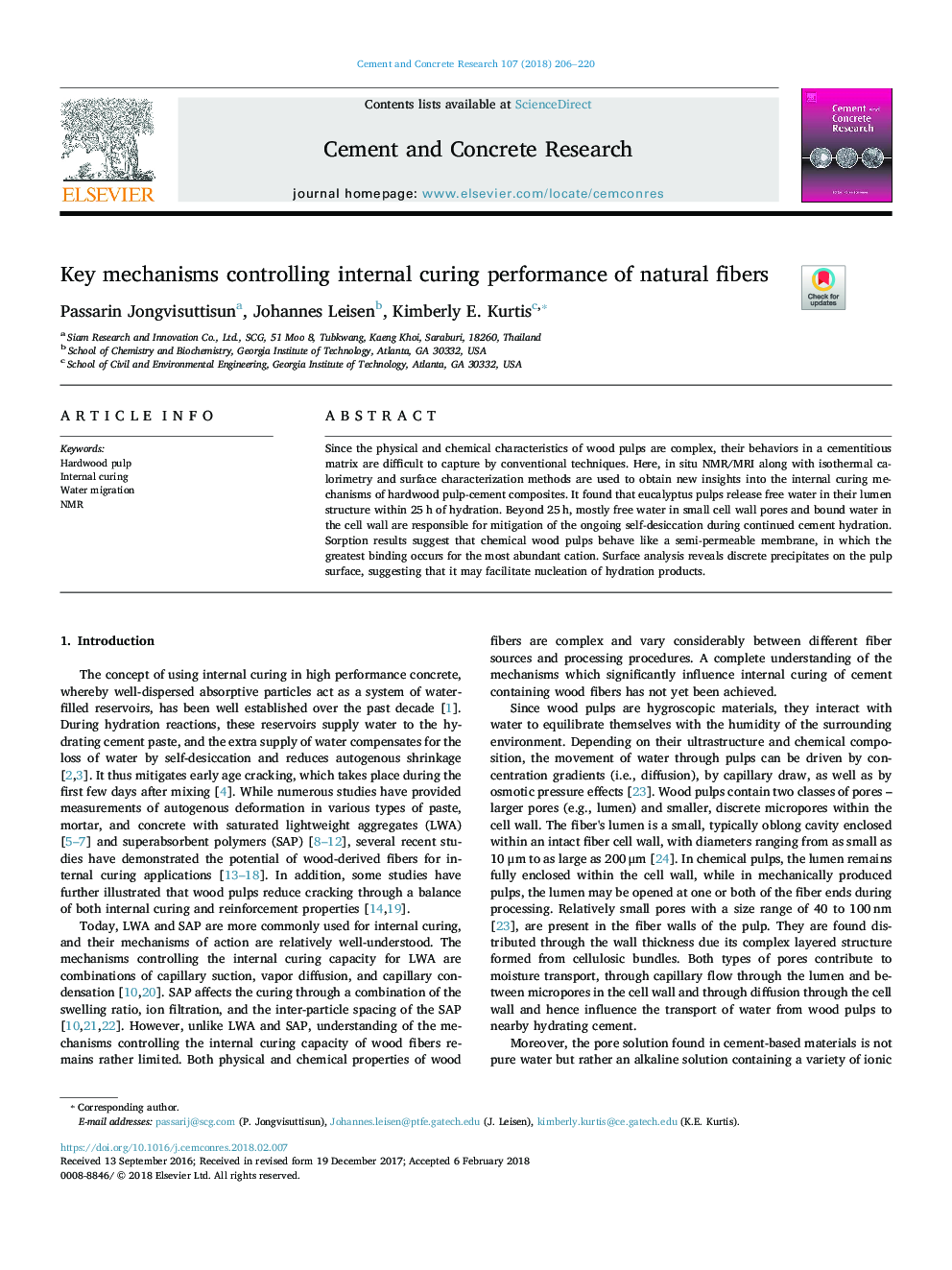| Article ID | Journal | Published Year | Pages | File Type |
|---|---|---|---|---|
| 7884783 | Cement and Concrete Research | 2018 | 15 Pages |
Abstract
Since the physical and chemical characteristics of wood pulps are complex, their behaviors in a cementitious matrix are difficult to capture by conventional techniques. Here, in situ NMR/MRI along with isothermal calorimetry and surface characterization methods are used to obtain new insights into the internal curing mechanisms of hardwood pulp-cement composites. It found that eucalyptus pulps release free water in their lumen structure within 25â¯h of hydration. Beyond 25â¯h, mostly free water in small cell wall pores and bound water in the cell wall are responsible for mitigation of the ongoing self-desiccation during continued cement hydration. Sorption results suggest that chemical wood pulps behave like a semi-permeable membrane, in which the greatest binding occurs for the most abundant cation. Surface analysis reveals discrete precipitates on the pulp surface, suggesting that it may facilitate nucleation of hydration products.
Keywords
Related Topics
Physical Sciences and Engineering
Engineering
Industrial and Manufacturing Engineering
Authors
Passarin Jongvisuttisun, Johannes Leisen, Kimberly E. Kurtis,
